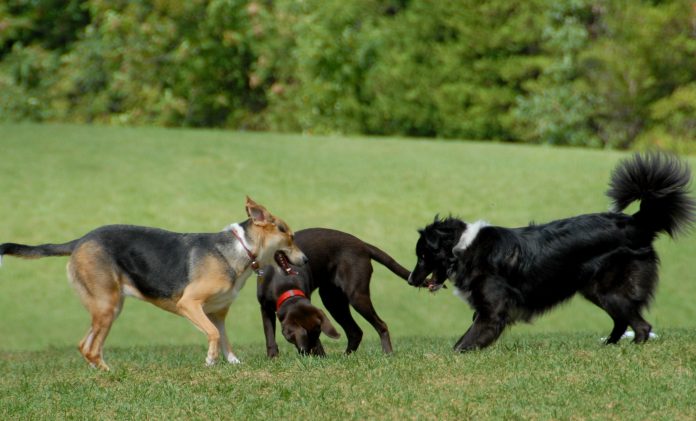 A new strain of the dog flu is spreading around the country, and a local veterinarian wants residents to keep an eye on their dogs for possible symptoms.
A new strain of the dog flu is spreading around the country, and a local veterinarian wants residents to keep an eye on their dogs for possible symptoms.
Several media reports in 2015 said the H3N2 strain of the virus had infected more than 1,000 dogs in one month in Illinois and neighboring states.
“It didn’t spread much,” said Dr. Melissa Cordero of the Bartonville Veterinary Center. “This time, it’s spreading more.”
The highly contagious strain of canine influenza began spreading throughout several states in late spring, according to media reports, from Florida to Missouri and now Texas, Cordero said.
Cordero said she has not heard of any confirmed cases in the southern Denton County area, but she has heard of one confirmed case in Dallas.
The most common way for the dog flu to spread is by interacting with other dogs, especially when they cough or sneeze, which gets the viral particles in the air, Cordero said. If your dog spends little time with other dogs, he has “very low risk” of getting the dog flu.
“The dogs at highest risk are traveling to shows and competitions, or spending time in highly crowded shelters or boarding facilities,” Cordero said.
The most common symptoms are coughing, lethargy and fever, Cordero said, and in worse cases, dogs may have nasal discharge or stop eating. About 10 percent of cases can lead to serious illnesses, such as pneumonia, which can be fatal, Cordero said.
Cordero urged dog owners to be on the lookout for symptoms in their dogs, and to take their pups to the vet if they have any of them, particularly coughing. She recommended that dogs that travel a lot or otherwise come into contact with a lot of other dogs get a dog flu vaccination. Healthy dogs with low risk of contact with other dogs don’t need the vaccine, Cordero said.




















